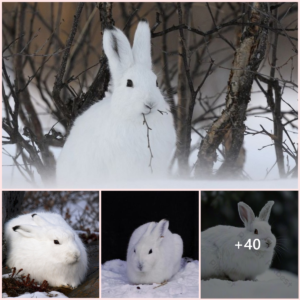Skunks embody a characteristic size and shape, with unique black and white fur. Their short feet, pointed noses, and powerful claws help them dig effectively. Some individuals have cream plumage that creates a striking highlight in the lush green environment.
Skunks often appear with different colored stripes stretching across their bodies, creating a very unique and interesting animal image.
Slender bodies, small heads, small ears, and short legs are characteristics that distinguish skunks in the animal world.
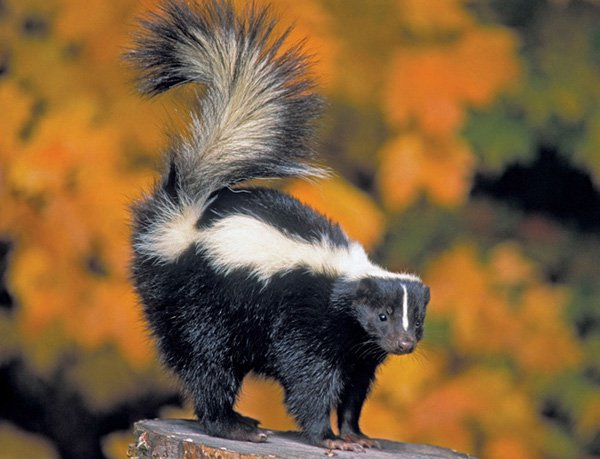 Unique Looks of Skunks
Unique Looks of Skunks 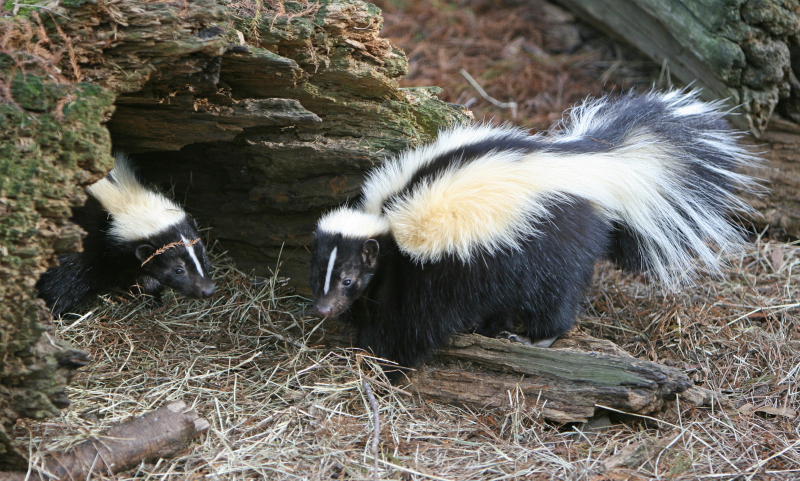 Physical Characteristics of Skunks
Physical Characteristics of Skunks
Skunks begin their flower dating in the early days of spring, courting with dances and enticing scents. What is unique is that they practice polygamy, each male can combine with many partners. Before becoming pregnant, the female mink creates a den to care for the upcoming cubs, usually in May. Pregnancy lasts about 66 days.
At birth, weasels are blind and deaf, wrapped in soft fur. After about 3 weeks, their eyes open, exploring the world around them. Mother ferrets both care for and protect them from potential dangers.
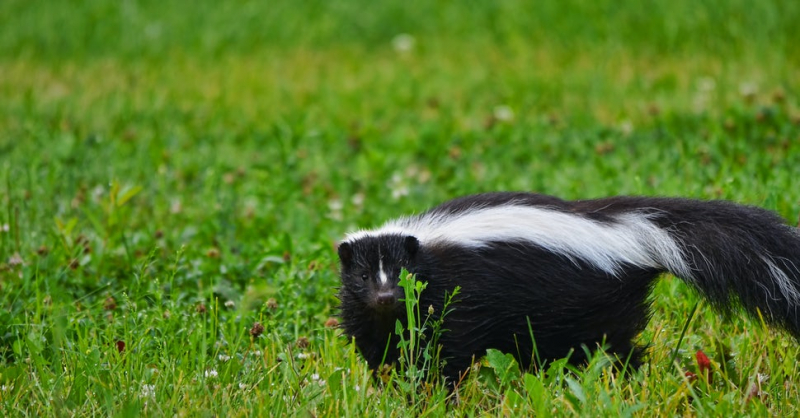 The Miraculous Story of Fertility
The Miraculous Story of Fertility 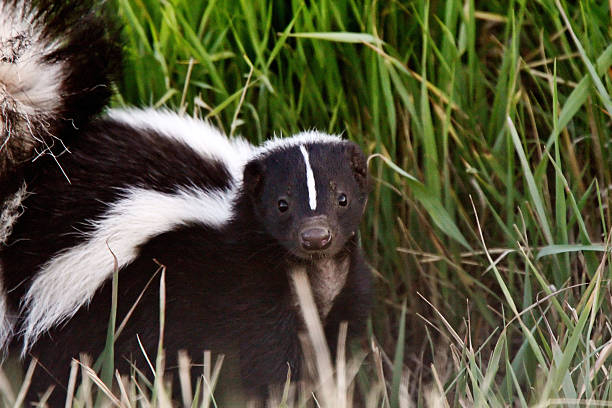 Unique Reproductive Behavior
Unique Reproductive Behavior
The odor from two glands near the weasel’s anus is not only a self-defense weapon but can also be sprayed up to 3.7 meters away, creating a threat to enemies. Sometimes, skunks will warn by raising their tails and propping their front legs, a pose that creates a threatening effect.
Some skunks even use the “banana trick” to enhance their odor. If they encounter obstacles, they can spray a foul smell directly into the enemy’s eyes, creating favorable conditions for escape. This unpleasant odor can cause the “victim” to carry the odor for several days.
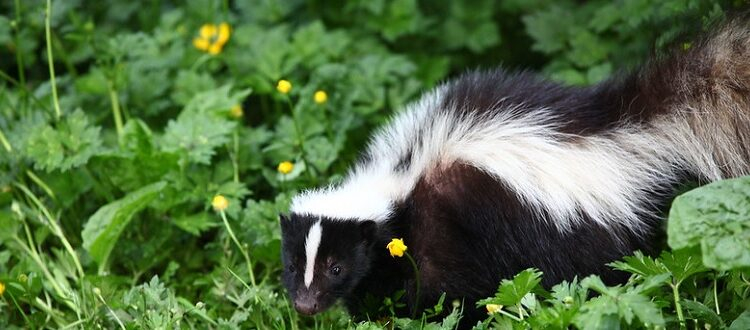 Weasel’s Unique Strategy
Weasel’s Unique Strategy 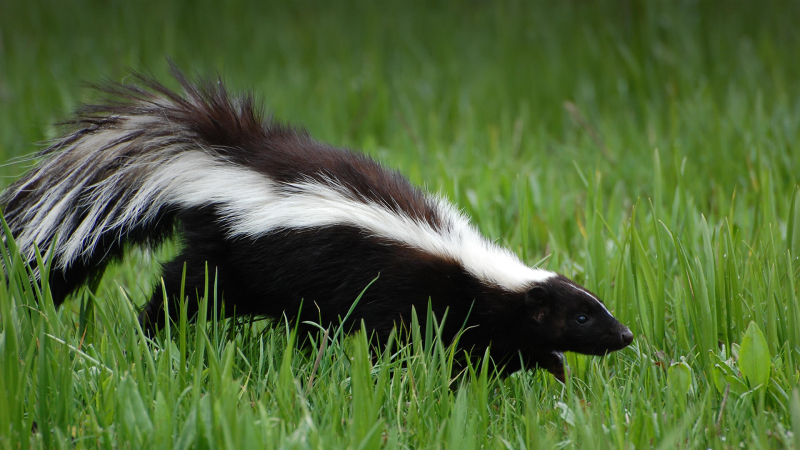 Skunk’s Special Tactics
Skunk’s Special Tactics
Skunks are truly an extremely ferocious animal. When they stamp their front feet and growl, it is a sign of anger, a warning that they are about to use their special weapon – the smell. Their sweat glands secrete a liquid with an extremely unpleasant odor.
This professional “gunner” can spray liquid up to more than 6 meters away, and they always aim directly at the face of the threat within a range of 3.7 meters. This liquid is not only a powerful weapon with a foul smell, but can also temporarily stop the enemy from breathing and losing vision if it hits the eye.
Skunks are not only dangerous to other species but can also carry the rabies virus, which can infect humans when bitten. However, there is no risk of contracting rabies from being sprayed with their fluids.
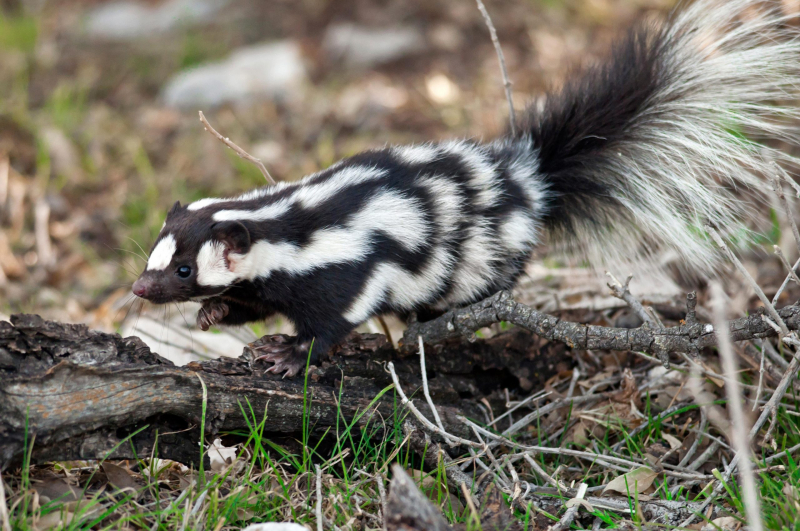 The ‘Nature’ of the Skunk
The ‘Nature’ of the Skunk 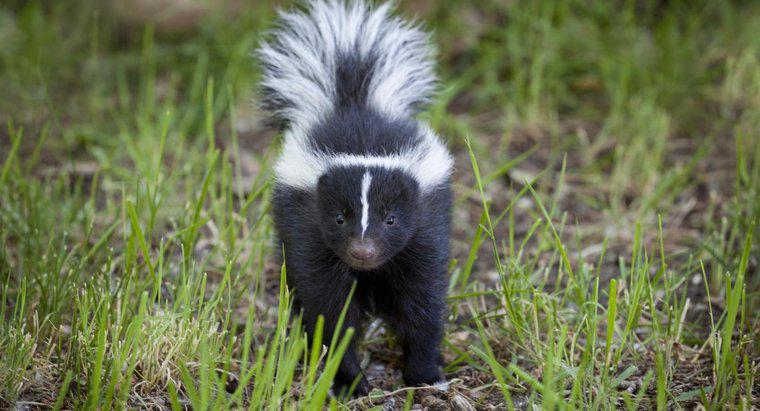 The ‘Nature’ of the Skunk
The ‘Nature’ of the Skunk
Skunks, quiet, gentle people, always share their “territory” and live in harmony. In particular, many female skunks often share “territory” together and live in the same den. Their burrows are often located deep in the ground, with many ‘small rooms’ and entrances. Occasionally, they also burrow into the dens of badgers, foxes, raccoons and other digging mammals.
During the day, they keep hidden in burrows, near piles of wood or rocks. It is at night that they hunt, looking for small animals, insects, bird eggs, carrion and even fruit.
During the winter, they do not hibernate but often gather in burrows together. It seems they understand that staying close together will keep them warmer. Although they do not hibernate, on cold days skunks become less active.
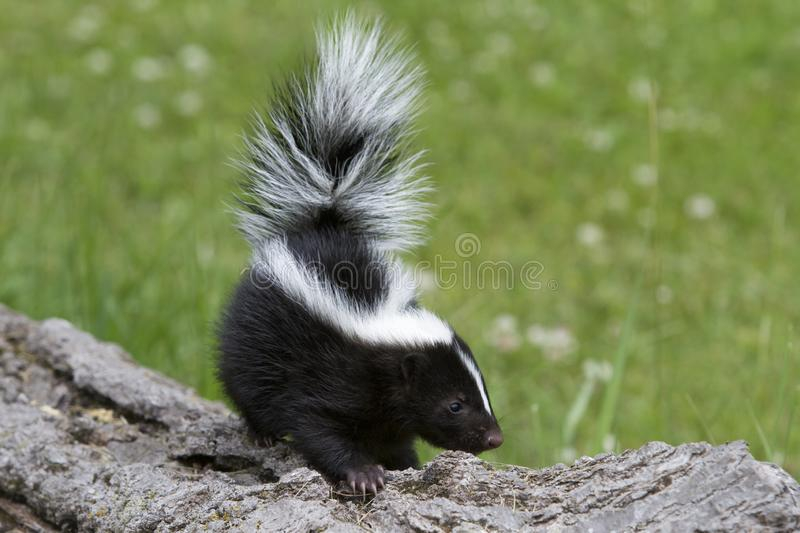 Active Behavior of Skunks
Active Behavior of Skunks 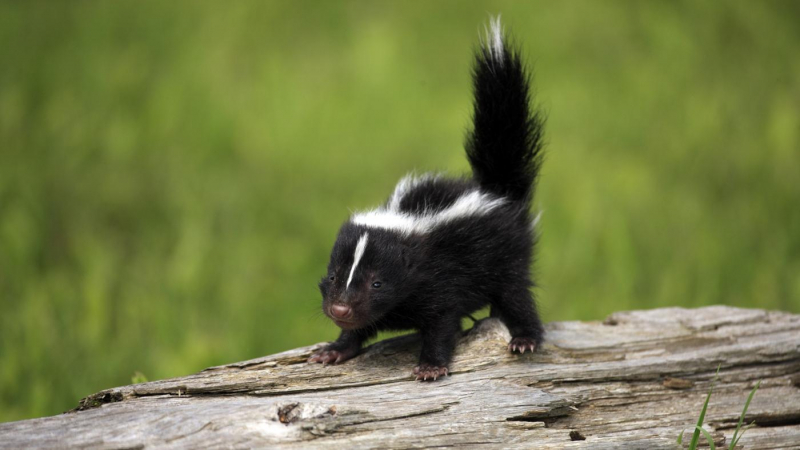 Active Behavior of Skunks
Active Behavior of Skunks
Skunks, animals that are active mainly at night, skillfully hunt when everyone else is asleep. They utilize their keen sense of smell and hearing to track the smells and sounds of their prey. With poor eyesight, they rarely depend on their eyes to hunt. Vision is quite limited, and they usually only react when there is movement or changes in light.
Skunks’ sharp noses help them track strong scents, such as ripe fruit, honey, animal carcasses, garbage, or even small prey. They also use hearing to detect prey in burrows. Skunks possess strong arms and claws, which help them dig deep to find insects and build dens for their young animals.
Skunks are capable of running at speeds of 10 miles per hour when necessary, although they rarely use their speed to hunt. Instead, they rely mainly on their finesse to skillfully capture prey, especially when they build their dens.
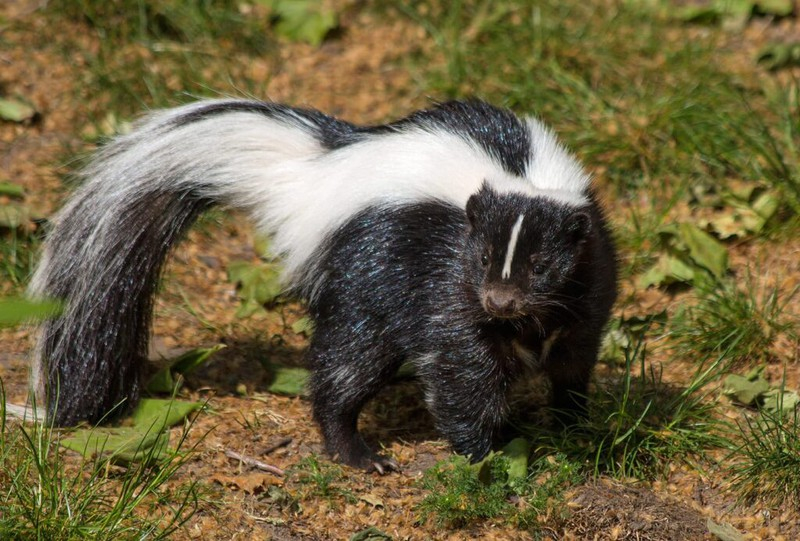 Skunk’s Art of Hunting
Skunk’s Art of Hunting 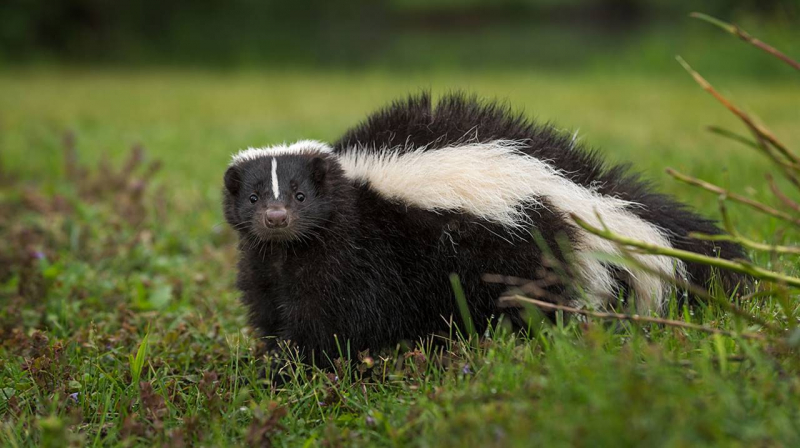 Skunk Predatorism
Skunk Predatorism
Skunks, omnivores, have a habit of eating all kinds of animals and plants. They are skillful hunters and willing to enjoy anything edible. In particular, when in close contact with humans, they can become talented “chefs” in “enjoying” waste. Their diet changes with the seasons. When possible, they will focus on foods high in fat and energy. Even when full, they continue to eat, causing weight and health problems for captive skunks.
Skunks like to eat a variety of foods such as:
- Small mammals (mice, rats, ground squirrels and chipmunks)
- Fish
- Small bird
- Egg
- Small amphibians (frogs and salamanders)
- Reptiles (small snakes and lizards)
- Garbage
- Insect
- Honey
- Nuts
- Seeds
- Vegetable
- …
Skunks will also not refuse food from pets and may eat grass, leaves, or mushrooms if there is no other food available.
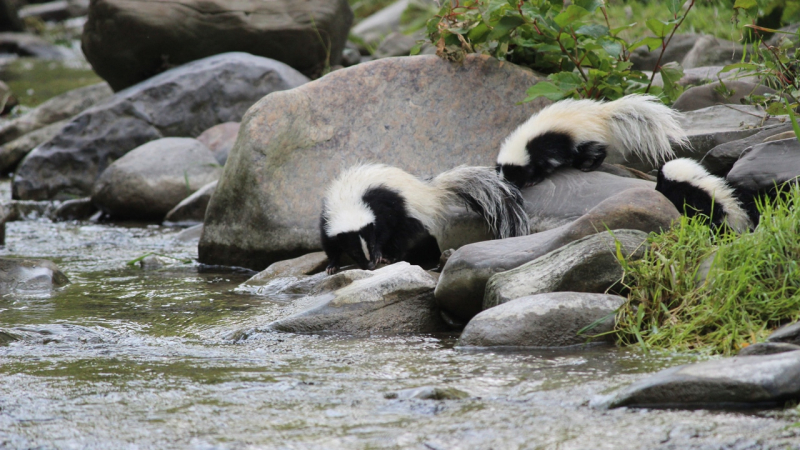 Skunk’s Daily Meal
Skunk’s Daily Meal 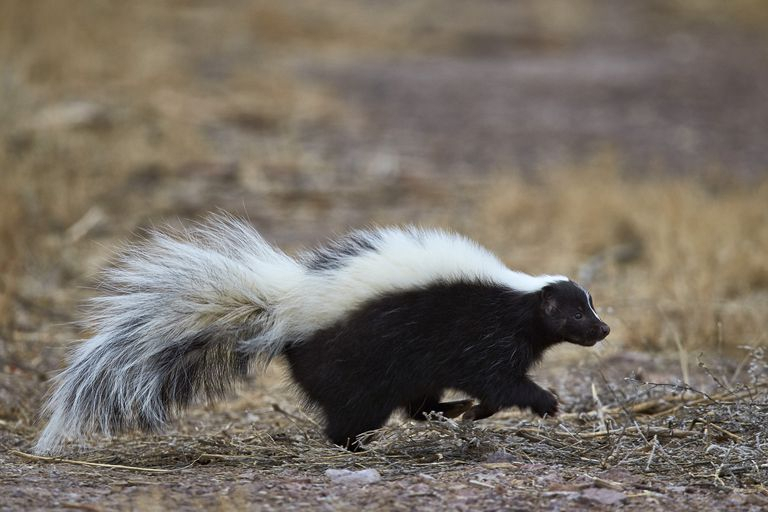 Skunk’s Daily Meal
Skunk’s Daily Meal
During the cold winter, skunks go on their ‘nap’ vacation. Although not completely in deep sleep, they wake up to wander or leave the nest in search of food. With reduced food availability, the variety of their diets expands. Skunks that live near humans will take advantage of the opportunity to eat more trash.
If they can find meat, they will hunt for prey such as mice, chipmunks or moles. Meanwhile, vegetables, nuts, seeds and fruits make up the majority of the winter diet. Skunks favor fruits such as chokeberry, wild grapes and cranberries. Walnuts, pecans, hickory nuts, or even sunflower seeds are also options. If possible, they will also eat carcasses near the nest.
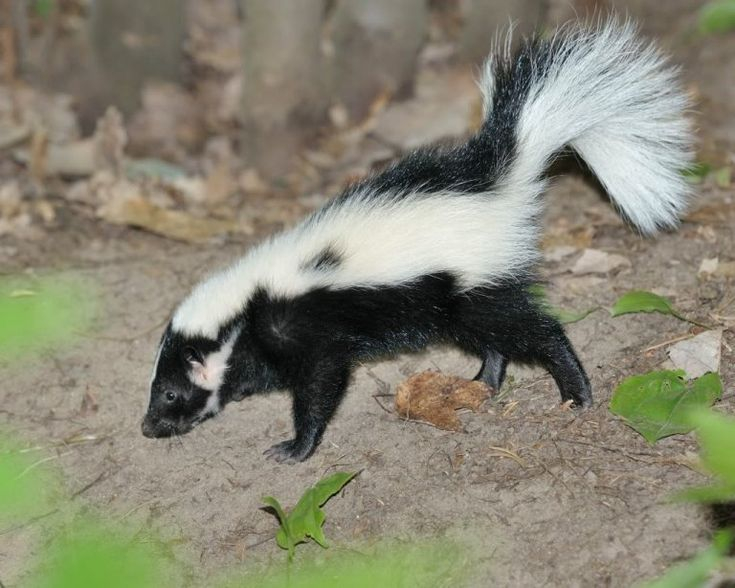 Winter Diet of Skunks
Winter Diet of Skunks 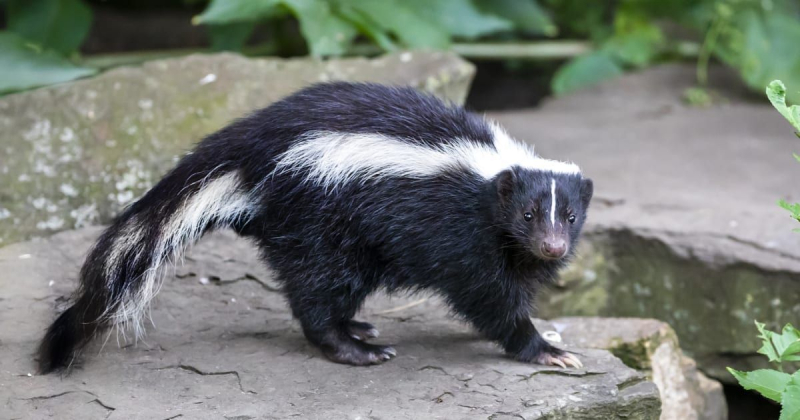 Winter Diet of Skunks
Winter Diet of Skunks
In summer, skunks make efforts to absorb the maximum amount of fat in preparation for the difficult period of winter. They mainly prey on small, fat animals such as rats, chipmunks, mice, moles, and ground squirrels. Small birds and their eggs are also targets, along with larvae, worms, beetles, and beetles.
Honey is a favorite delicacy, and skunks do not hesitate to attack beehives to obtain this resource. Their thick coat protects them from bee stings, and they will eat not only bees but also nests and larvae. Additionally, skunks also enjoy plant foods such as fruits, leaves, grass, nuts, and seeds.
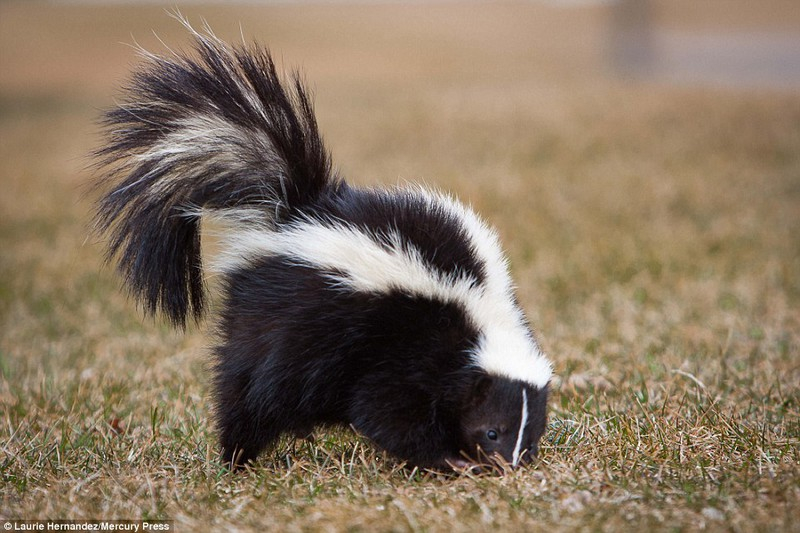 Skunks: Summer’s Food and Beverage
Skunks: Summer’s Food and Beverage  Skunk’s Summer Nutrition
Skunk’s Summer Nutrition
Not only possessing a keen sense of smell and hearing, skunks also have poor eyesight. They cannot see objects clearly at a distance of more than 3 meters, which increases the risk of falling into dangerous situations on the road. Although they can live up to 7 years in the wild, most skunks only live about 1 year. In contrast, captive individuals can have a lifespan of up to 10 years.
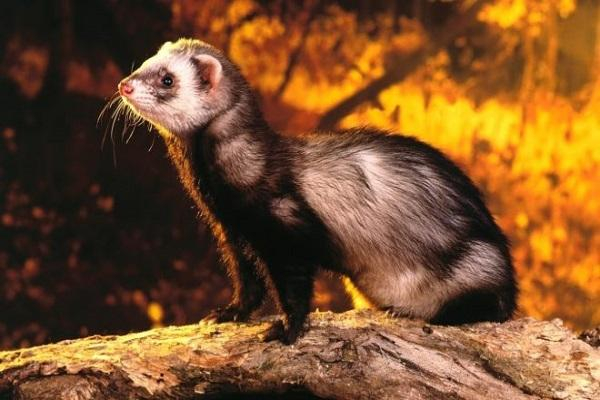 Skunk’s Weak Vision
Skunk’s Weak Vision 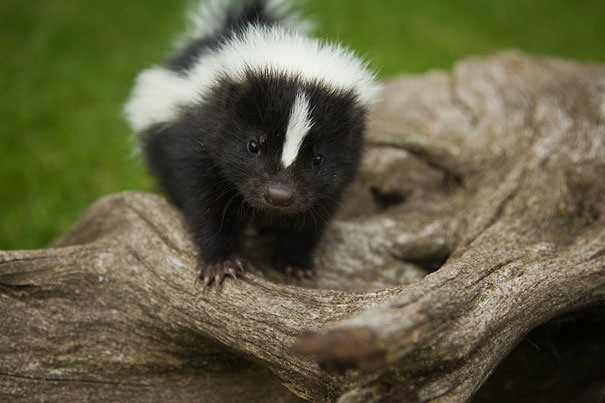 Skunk’s Amazing Senses
Skunk’s Amazing Senses
Content is developed by the Mytour team with the purpose of caring for and increasing customer experience. For any comments or suggestions, please contact the care hotline: 1900 2083 or email: [email protected]





